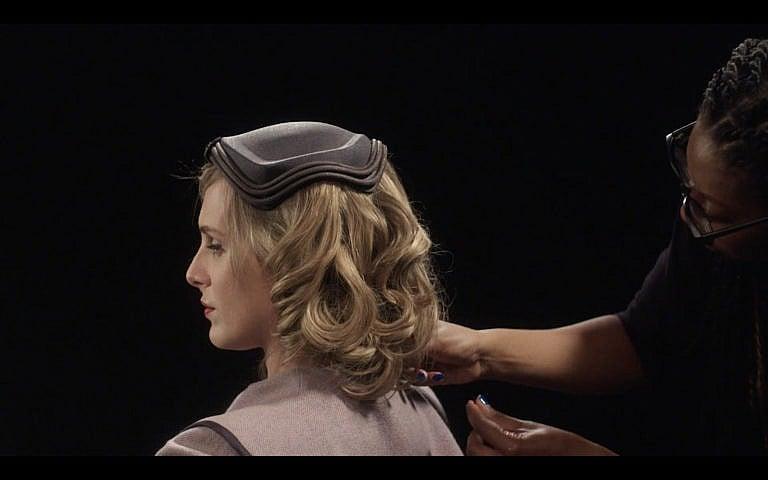‘Framing Agnes’ re-enacts the real lives of trans people in the 1950s
The daring film features a cast of trans actors and premieres at this year’s Hot Docs festival

Framing Agnes. (Courtesy of Fae Pictures/Level Ground)
Share
The film Framing Agnes, a Sundance award winner that screened at Toronto’s Hot Docs festival this month, features a cast of trans actors who take real case files from a 1958 UCLA sociology study and dramatize them as a talk show, with the study’s head researcher, Harold Garfinkel, as its host. Here, director Chase Joynt and historian Jules Gill-Peterson discuss the art of finding community in telling trans stories.
The transcripts
Fate and a crowbar led to the recovery of the subjects’ transcripts in 2017. Researchers at UCLA had previously delved into Garfinkel’s private archives, but they passed over one drawer that was rusted shut. Armed with the recovered records, Joynt and his friend Kristen Schilt began making connections between the biographical details on the page and trans actors who could bring them to life. For example, the character of Henry—whose corresponding subject is a writer—is portrayed by poet and memoirist Max Wolf Valerio, channelling his lived experience of trans masculinity into the role. “We can’t bring these people back from the dead,” Gill-Peterson says. “But they live on in the way they tell us about what is difficult and joyous about the trans lives we live today.”
The interview
While poring over Garfinkel’s research, Joynt found himself more interested in the questions asked of the participants than their answers. “I thought, ‘What would happen if we spent more time thinking about modes of interrogation rather than modes of disclosure?’ ” he says.
Framing’s stripped-down set, tiny table and uncomfortable wooden chairs all strategically convey a sense of alienation. But even in the hot seat, the subjects push back. Joynt describes one moment of onscreen resistance in which Garfinkel interviews Barbara (Jen Richards), telling her he spoke to another troubled and lonely subject. “I’m not troubled,” Barbara responds, defiant.
The recreation
To achieve a vintage look and feel, Joynt’s team focused on ’50s clothing, decor and colour palettes, rather than digging for evidence of what each individual subject looked like. “We have no images of any of our archival subjects,” Joynt says. “I am so happy they aren’t captured in that way.” He says that, in the past and present, invasive and objectifying research has done extraordinary harm to trans and gender-non-conforming people. “That lack of reference is a very small way these real people managed to escape one further clutch of power from the world of social science that they were ensnared in,” Gill-Peterson says.
RELATED: Zarqa Nawaz had a hit show, then a decade-long dry spell. She’s ready for her second act.
The scene
Drawing visual reference from the one-on-one format of The Mike Wallace Interview, Garfinkel (played by Joynt himself) sits across the table from Agnes (Zackary Drucker), a young trans woman seeking the gender-affirming care she needs. The film loops viewers into the development of each character, flipping back and forth between the re-enactments and living-room confessionals with the cast. The re-enactments show how trans people are put under the microscope, while the present-day reflections on trans politics, visibility and representation help viewers to unpack why this is the case. “It allows us to settle into those moments, then snap back out and say, ‘But why are we here?’ ” says Joynt.
This article appears in print in the May 2022 issue of Maclean’s magazine with the headline, “The story of us, starring us.” Subscribe to the monthly print magazine here.